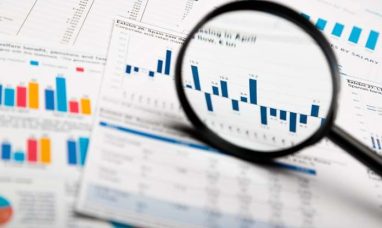Apple (NASDAQ:AAPL) finds itself trading at a four-month low of $171.21, nearing its May lows. Despite this dip, the company’s earnings growth prospects remain intact, making Apple stock an attractive prospect for value-oriented investors.
Analysts foresee earnings per share (EPS) for the fiscal year ending September 2024 to climb to $6.57, up from an anticipated $6.07 for the fiscal year ending September 2023. This projection suggests a robust EPS growth rate of 8.23% over the next year.
Furthermore, Apple’s free cash flow (FCF) outlook is particularly promising, with expectations that it could surpass $121 billion next year. This is a notable increase from the projected $105 billion in FCF for the fiscal year ending September 30, 2023.
The key driver behind this positive outlook is Apple’s remarkably high FCF margin, standing at nearly 30%. For instance, in the last quarter (fiscal Q3 ending June 30), the company generated $24.287 billion in FCF from $81.8 billion in sales, equating to a robust FCF margin of 29.7%.
Applying this 30% margin to next year’s projected sales of $405.9 billion could potentially result in Apple’s FCF reaching approximately $121.77 billion.
FCF margin could rise to over 35% by the end of 2024. This could translate into FCF exceeding $142 billion in the next year or two.
Apple might generate as much as $169 billion in FCF, driven by the substantial 68% margins derived from its services division, which is steadily increasing as a percentage of total sales.
This has significant implications for Apple’s valuation in the future. By employing a 5% FCF yield metric, equivalent to a 20x FCF multiple, it becomes evident that AAPL stock could potentially achieve a market valuation of $2.84 trillion. This projection is derived from multiplying $142 billion in FCF by 20, representing a 6% increase compared to its present market capitalization of $2.68 trillion. Consequently, AAPL stock could rise by 6% to $181.48 per share.
Furthermore, if Apple manages to generate $169 billion in FCF in the coming years, its stock could potentially command a market capitalization of $3.38 trillion. This represents a substantial 26% gain from today’s valuation.
In essence, AAPL stock appears poised to experience an increase ranging from 6% to 26% over the next year or so, as the market becomes increasingly aware of the company’s FCF prowess, particularly its remarkable FCF margins.
Generating Additional Income with Apple Stock Puts
Investors holding Apple stock can explore an avenue to generate additional income by selling short out-of-the-money (OTM) AAPL put options with near-term expiration dates.
For instance, as of September 29, AAPL’s $160 strike price puts for the October 20 expiration period were trading at 81 cents. By shorting these puts, investors can immediately secure a yield of 0.506% for a three-week investment (i.e., $0.81 divided by $160.00).
Moreover, the $160 strike price is significantly OTM, situated 6.55% below AAPL’s closing price on September 29, which stood at $171.21 per share.
Over a year, assuming this trade is repeated, the expected return would amount to 8.60%. This calculation is based on the fact that there are 17 three-week periods in a year (i.e., 0.506% multiplied by 17 equals 8.60%). It’s important to note that this is a theoretical return, as there is no guarantee of consistently achieving a 0.5% yield every three weeks while shorting OTM AAPL puts.
Practically, this translates to an investor with $16,000 in cash and/or margin with their brokerage firm being able to “Sell to Open” one put contract at the $160 strike price for the October 20 expiration. Upon executing this trade, the account would receive an immediate $81.00.
As long as AAPL’s stock price remains above $160 on or before October 20, the investor will not be obligated to purchase 100 shares of AAPL at $160.00. During this time, they will retain the $81 in their account, effectively lowering their breakeven point to $159.29 per share. This means that the breakeven point is 6.96% below AAPL’s closing price of $171.21 on September 29.
If this yield of $81.00 is consistently realized every three weeks, the total expected return for the year would amount to $1,377. This represents 8.60% of the total $16,000 invested during that period.
Featured Image: Unsplash















